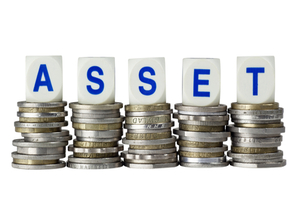Asset Finance – An Invaluable Financing Tool for UK Businesses
Running a business almost always translates to keeping a constant watch over the flow of funds. From acquiring customers or clients to delivering goods and from negotiating the best deals to making sure that the money reaches your bank, it’s all about staying on the right side of the numbers.
An important number in this context is the rate of growth. Few businesses can afford to keep operating in the same way, with the same old template for years on end. It’s simply impossible to stay where you are and expect the profitability not to suffer while your competitors are continually at work, trying to find newer ways of getting ahead of you. Most businesses turn to using better, more efficient assets in order to expand, optimise and improve their business operations. These assets can range from daily use electronics like telephones or printers to heavy-duty machinery. Asset Finance offers a great way to finance the use or purchase of such assets without having to divert the cashflow.
We have discussed here what Asset Finance is and what advantages it brings to the table. But how exactly does Asset Finance work?
Let’s try to sum it up.
1. Deciding the ‘Value’ of the Asset to Your Business
The first, and perhaps the most important step in the process starts with you. Before incorporating assets – especially the expensive ones – in your business operations, you need to be doubly sure that the investment is futuristic and profit-oriented. Therefore, before zeroing in on an asset, you need to consider all the aspects that the asset in question offers.
For example, while deciding to lease a heavy-duty piece of machinery like a crane, you need to make sure that you have drawn a detailed schedule for its use. As such assets are typically leased on daily basis, not having a schedule in place can often see you paying more than you really need to.
2. Choosing the Best Supplier
If your business has been trading for years, it’s very likely that you already have a supplier of your choice. Having a supplier that you are familiar with can help you save many hours of negotiation and unforeseen delays. If you don’t have this luxury, you can seek advice from relevant industry contacts to choose the best supplier.
In many cases, we can help you find the best supplier in consultation with the most experienced and suited Lenders for your specific needs.
3. Obtaining a Quote from the Supplier
Once you have finalised the supplier, you will need to negotiate with them the most affordable deal for the asset. If you are leasing the asset directly from Lender, you may very well skip this step.
Upon successful negotiations, you may request the supplier to provide you with a detailed quote for the purchase or the lease. We will review this quote on your behalf and forward it to the suitable Lenders along with your Asset Finance application.
4. Lenders Review Your Application
From the extensive range of Lenders we have available to us, we choose the ones who are most likely to accept your Asset Finance application. These Lenders, upon reviewing your application along with the supplier’s quote, convey their decision to us. We further negotiate with these Lenders to help you get the best parameters and then convey the decision to you. All decisions are typically made within 24 hours of you submitting all of the necessary details.
5. You Review the Offers
We will notify you when all the offers are conveyed to you. You can review, assess and compare these offers at your discretion. Once you choose an offer that you think is the best, we will notify the Lender of your decision.
You can then communicate the further requirements to the Lender. This is the stage at which an Agreement in Principle (AIP) is drawn and signed.
6. Processing of the Invoice by the Lender
As soon as the AIP is in place, the Lender will request the supplier to prepare the invoice. This invoice will also typically carry the lease contract if you have chosen to lease the asset. The Lender, upon receiving this invoice, will process it at the earliest. This will clear the ground for the supplier to make the asset available to you. This process typically takes up to 7 business days to conclude.
7. Honouring the Repayment Schedule
The repayment schedule will come in force once the asset is available to you. As per the terms you have agreed to in the AIP, you will need to make timely repayments. Once the term is over, the asset will return to its appropriate owner.
We Make Asset Finance Easy for You!
Securing an Asset Finance package may not sound easy when you realise that it’s a multi-stage process. But that shouldn’t mean that your business can’t get Asset Finance.
We’ve helped numerous businesses just like yours through each and every stage of the Asset Finance application process. Let us take care of the paperwork and negotiations while you focus on taking your business to newer heights.
If you have any queries about how Asset Finance works, do contact us today to speak to one of our Asset Finance Experts!

